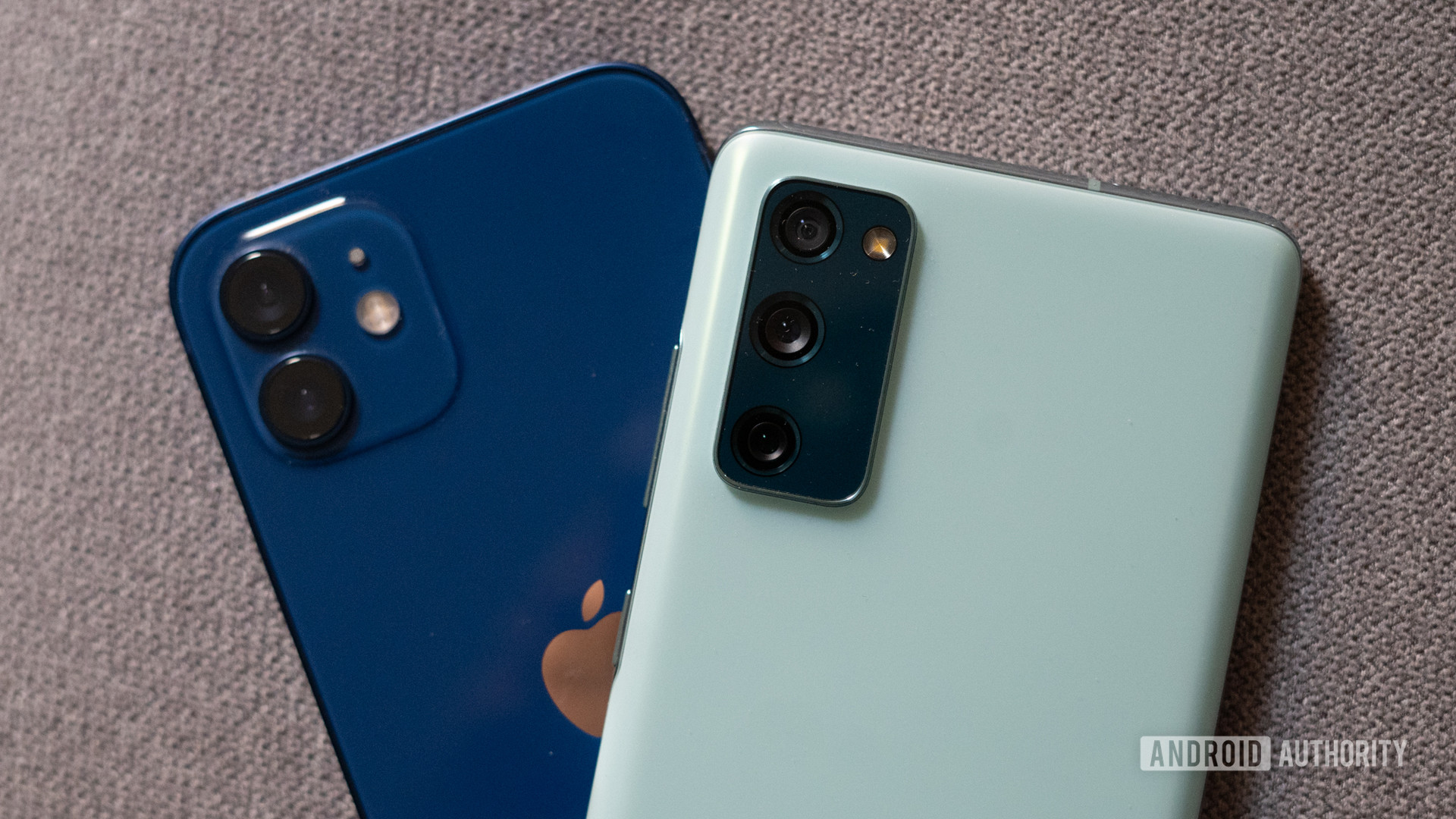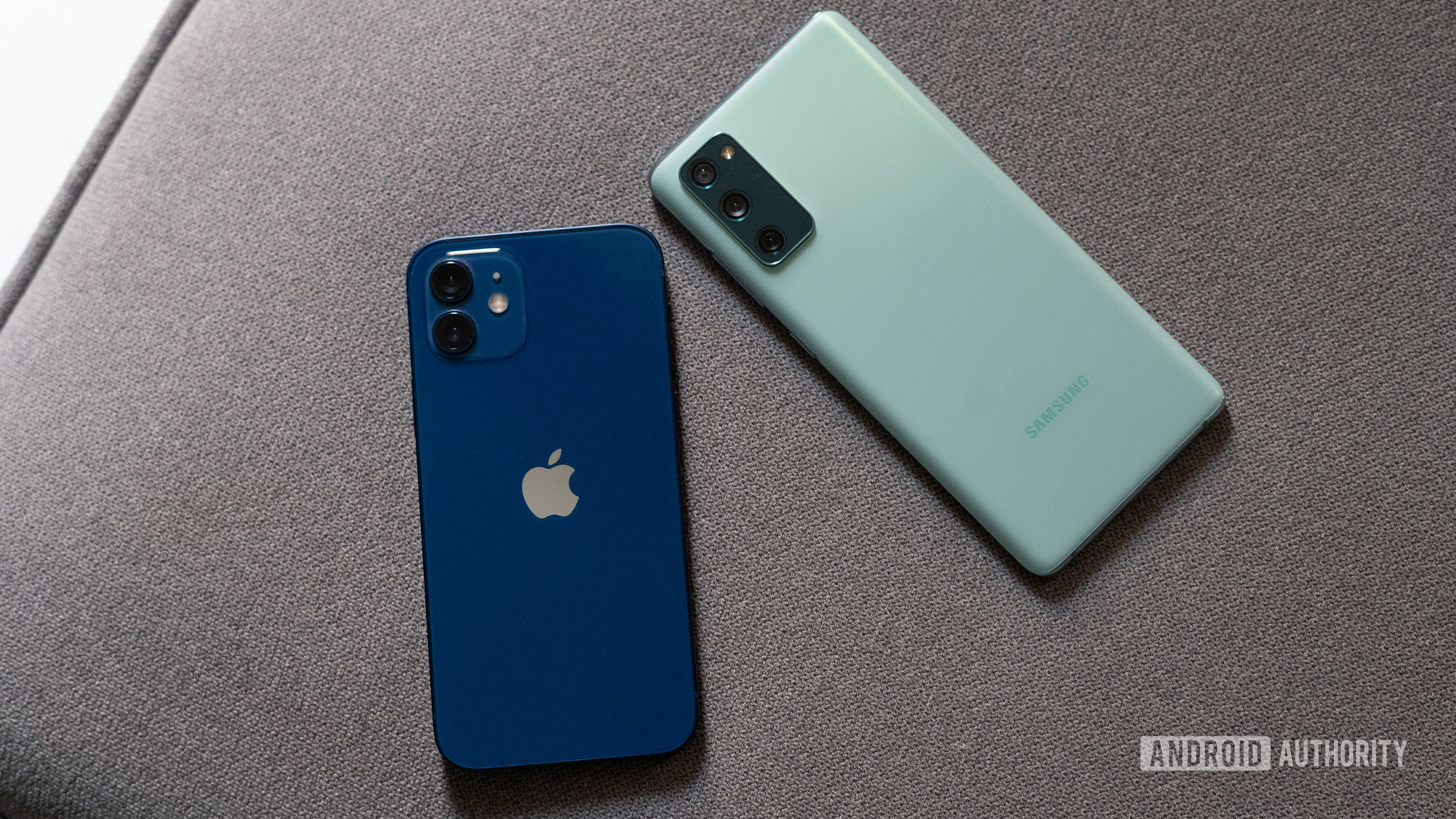Affiliate links on Android Authority may earn us a commission. Learn more.
Samsung Galaxy S20 FE vs iPhone 12 camera shootout: Close, but not quite
Published onNovember 24, 2020

The convenience of a phone camera is why it has become such an intrinsic part of the smartphone experience. The ability to quickly whip it out of your pocket, take a photograph, and know that you’ll get a great-looking image is why a lot of people splurge on a high-end flagship phone. However, you don’t have to break the bank anymore to get an amazing camera phone.
The iPhone 12 is Apple’s affordable smartphone. The one that eschews some nice-to-have features for a lower, more approachable price point. Meanwhile, the Samsung Galaxy S20 FE is Samsung going all-in on a feature-packed affordable flagship.
With similar price points, but two different ecosystems, we pit the two phones against each other to test out their imaging prowess. Here is Android Authority‘s iPhone 12 vs Samsung Galaxy S20 FE camera test comparison. Be sure to cast your vote on the winner in the poll at the end.
Editor’s note: We’re using the Exynos version of the Galaxy S20 FE for this shootout. While there may be some minor ISP tuning differences, the camera samples are generally reflective of both the 4G model and the Snapdragon-powered 5G version you can buy in the US.
Samsung Galaxy S20 FE vs iPhone 12: Camera specs
Unlike the iPhone 12 Pro, the regular iPhone 12 makes do with just two lenses — a 12MP primary camera, and a secondary 12MP ultra-wide sensor. The Samsung Galaxy S20 FE, on the other hand, includes a 3x telephoto lens paired up with an 8MP sensor. Here’s a look at the full camera specs of the two phones.
The Samsung Galaxy S20 FE has an advantage over the iPhone 12 with its addition of a dedicated telephoto shooter. Beyond that, both phones are similar in their capabilities. They both offer support for dedicated night modes, portrait mode shooting, and more. The iPhone 12 includes support for Dolby Vision video recording at 30FPS, which is an industry first, but you’ll need a compatible display to really see the benefits.
| iPhone 12 | Samsung Galaxy S20 FE | |
|---|---|---|
Rear cameras | iPhone 12 12MP, f/1.6, 26mm, 1.4µm, OIS 12MP ultra-wide, f/2.4, 13mm, 120 degrees FOV | Samsung Galaxy S20 FE 12MP, f/1.8, 26mm, 1.8µm, OIS 12MP ultra-wide, f/2.2, 13mm, 1.12µm, 123 degrees FOV 8MP telephoto, f/2.4, 76mm, 1µm, OIS |
Rear video | iPhone 12 UHD 4K 60fps 1080p 240fps Dolby Vision HDR | Samsung Galaxy S20 FE UHD 4K 60fps 1080p 240fps |
Front cameras | iPhone 12 12MP, f/2.2, 23mm | Samsung Galaxy S20 FE 32MP, f/2.2, 26mm, 0.8µm |
Front video | iPhone 12 UHD 4K 60fps | Samsung Galaxy S20 FE UHD 4K 60fps |
Daylight
Food photography, selfies, or just a random shot taken during a walk around the block are common use cases for a smartphone. For me, it’s when I spot an interesting looking building, an old monument, or a delicious plate of food. With that in mind, I took the iPhone 12 and the Samsung Galaxy S20 FE out to see how well the two phones performed under similar conditions using the multiple lens combinations.
Photography terms explained: ISO, aperture, shutter speed, and more
The primary camera is where most of the focus (no pun intended) lies with smartphones. Usually the biggest sensor, most high-end phones do well here. In fact, the differences usually come down to camera and software tuning, as well as individual preferences.
The iPhone 12 opts for a softer, warmer tone which was closer to the original scene. The Samsung, on the other hand, has predictably opted for boosted shades — a trend that remained consistent across our tests.
The Galaxy S20 FE’s shot with a contrasty, oversharpened look might be a bit more striking on social media but it’s not going to appeal to everyone.
In a slightly more complicated shot of a derelict monument, the different approaches towards imaging become more apparent. The iPhone 12’s neutral tone is more visually appealing compared to the significantly boosted greens shot by the Samsung Galaxy S20 FE.
The iPhone also edges forward in maintaining a bit more detail in the highlights, as well as dynamic range for bringing out details in shadow areas. The Galaxy S20 FE’s image looks a bit too stark for my taste, though your mileage may vary.
The same scene shot using the wide-angle camera once again exhibits a wildly different approach towards image capture. The iPhone does a decent job at distortion correction but isn’t quite as wide as the Samsung. Moreover, flaring is a constant concern with the iPhone 12 when shooting into a light source. You can see this with the setting sun in this image. It does, however, have significantly more detail across the image.
On the face of it, the Samsung Galaxy S20 FE produces a more striking image. However, the HDR processing goes too hard in toning down highlights, bringing out the blues in the sky — the scene looked nothing like it. Cropping in reveals a significant loss of low-level detail and this is visible in both the foliage and the trees.
While neither image is perfect, the iPhone 12 opts for a closer to accurate representation compared to the social-media friendly take by the Galaxy S20 FE.
Related: Samsung Galaxy S20 FE review second opinion — so close to being a OnePlus killer
Indoors
Indoors, in a cafe setting, the iPhone 12 pulls ahead of the Galaxy S20 FE with better lighting retention, lower noise, and better color science. The Samsung Galaxy S20 FE bungles up the warm yellow tones with an almost pink hue that is far from accurate.
As is clear by now, the two phones have a fundamentally different approach towards images. Samsung opts for a more dramatic shot with a lot of contrast compared to the neutral skew of the iPhone. In some cases, this ends up looking more appealing. That said, the iPhone 12 consistently does a better job of toning down highlights.
Now, I’m just as guilty as most people of taking a photograph of a good plate of food instead of digging right in. Food photography is an extremely popular use case for smartphone cameras, and the iPhone leads here through better dim-light performance. Close up, there is more detail, though the iPhone 12 fudged up the white balance by veering too much into warm tones.
On the other hand, the Samsung Galaxy S20 FE has a tendency to smear details in less than ideal lighting. The plate looks dull and lifeless here.
Portrait mode, selfies, and low-light
Computational photography has come a long way. Be it better portrait mode, both on the rear and front cameras, or better low-light imaging, the fusion of hardware and software has brought along big leaps in smartphone imaging prowess. Let’s take a look at the software capabilities of the two phones in our Samsung Galaxy S20 FE vs iPhone 12 camera comparison.
Let’s start off with portrait mode. I got a socially distanced family member to take a photograph of me. The goal was to see how well the two cameras are able to segment faces and add natural-looking bokeh blur.
There are a couple of things that stand out in the portrait mode samples. The two phones have drastically different white balance — neither of which is entirely accurate. The iPhone 12 opts for a slightly brighter tone with lifted shadows and a much warmer white balance for a more appealing shot. The Galaxy S20 FE, on the other hand, leans too far into blues and exhibits significant oversharpening.
I’ll be honest here. I’m surprised by how well the Samsung did at creating an effective cut out around me. The bokeh effect is a bit more subdued compared to the iPhone but it still manages to look fairly convincing. The bokeh fall-off on both phones is reasonably natural as well. It can be further adjusted using the gallery app on either phone.
Portrait mode selfies are where we start to see broader differentiation between the two phones. This time around, the Samsung Galaxy S20 FE produces a more natural-looking image, with the iPhone opting for warmer color tones and heavily lifted shadows.
Our verdict: Apple iPhone 12 review
Out of the camera, the iPhone 12’s shot looks more appealing and displays a better dynamic range. Conversely, the Galaxy S20 FE nails the color but trades it with heavy noise reduction and a general lack of detail.
Both phones have fairly robust night modes built-in. In the scene above, both cameras defaulted to a two-second handheld shot and captured sharp, well-exposed images. At first glance, the S20 FE’s image might look a bit cleaner but that’s due to significant noise reduction.
The iPhone 12, on the other hand, has much more detail at the expense of a grainier image. Additionally, it tends to lift black levels quite a bit. The iPhone 12 wins this round.
Things get a bit more interesting when shooting night mode shots using the ultra-wide cameras. While both images show signs of heavy noise reduction, this time around the Samsung Galaxy S20 FE leads with a much more evenly lit shot, as well as more detail. This is despite the much-touted Deep Fusion algorithms applied to the iPhone 12’s wide-angle camera.
Samsung Galaxy S20 FE vs iPhone 12 camera test: The verdict

Wrapping up our Samsung Galaxy S20 FE vs iPhone 12 camera test, it’s a bit surprising to see just how close Samsung’s affordable flagship gets to the iPhone 12. However, the Apple’s phone wins out by a small margin.
In a lot of cases, there’s no obvious winner. It’s more about preferences. However, there’s no doubt that in most cases, the iPhone 12 resolves just a bit more detail and handles highlights better.
Which phone takes better photos: the iPhone 12 or the Samsung Galaxy S20 FE?
As a whole, the two phones take very different approaches to tackle the same problem. The differences come down to personal choice in color science rather than a drastic gap in imaging capabilities.
Video quality is, however, vastly better on the iPhone 12. So if that is a priority for you, the choice becomes a lot easier.
Which set of images do you prefer? Cast your vote for the winner of our shootout in the poll above.